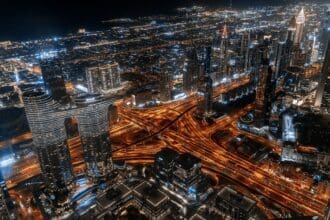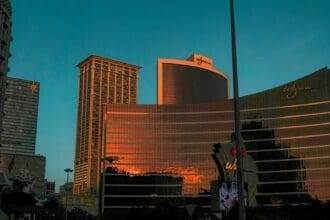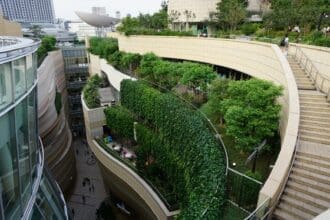The Dubai property market is a dynamic ecosystem, known for its rapid booms and sharp corrections. For anyone looking to understand future trends, it is crucial to first look back. The analysis of historical data and key economic factors is fundamental to making informed decisions. This is precisely why we must understand the past—it is the key point. The periods around 2003 and 2014 are not just dates in history; they are the two pillars that shape today’s market landscape and offer invaluable lessons for the future.
Content
2003: The Era of Clear Demarcation and Luxury
At the beginning of the new millennium, Dubai laid the foundation for its reputation as a global hub for luxury properties. The market at that time was marked by a clear and predictable structure. Projects like those in the Emirates Living district- Emirates Hills, The Meadows, The Lakes, and The Springs- created a crystal-clear market segmentation.
- Ultra-luxury segment: Emirates Hills was designated for the wealthiest.
- Luxury segment: The Meadows and The Lakes attracted affluent buyers.
- Affordable segment: The Springs offered more accessible villas and townhouses for the middle class.
The most defining characteristic of this era was the clear demarcation. There was no mixing of property types- apartment buildings were simply absent from these villa and townhouse communities. This strategy not only provided transparency for buyers but also helped build a strong and unique identity for each zone. Investors knew exactly what product they were putting their money into, which contributed to its value stability.
2014: The Second Major Boom and the Birth of the Suburbs
After the market navigated the 2008-2009 global financial crisis, it regained momentum and reached its second major peak around 2014. This period was marked by several key changes that permanently altered the Dubai property market.
First, the introduction and effective implementation of escrow accounts around 2013 brought significantly greater security for investors in off-plan projects. Second, the mega-project Mohammed Bin Rashid City (MBR City) was announced-an ambitious “city within a city” concept with a land area comparable in scale to Manhattan, that redefined luxury living with communities like District One and Sobha Hartland.
However, the most important transformation was the birth of the suburbs concept. The market realized it could not grow on luxury properties alone. This led to the emergence of affordable communities such as Villanova, Mira, Nshama Town Square, and later Damac Hills 2 (initially announced in 2014 as Akoya Oxygen). The idea was clear: salaried employees and middle-income professionals were directed towards these new, well-planned suburbs, while prime locations remained reserved for the rich and ultra-rich. This strategic division allowed the market to absorb the growing population without creating chaos in pricing.
Key Lessons for the Modern Investor
- Segmentation is a strength: A clear distinction between different property classes creates value and predictability. When luxury villas are not overshadowed by tall apartment buildings, they retain their appeal and price.
- Regulations build trust: Measures like escrow accounts are key to attracting serious, long-term investors and curbing speculation.
- The market needs balance: The development of the affordable segment in the suburbs was vital for sustainable growth. A market built solely on luxury cannot last.
Conclusion
The history between 2003 and 2014 is more than just a construction timeline; it is a handbook for successful investments. The lessons from the past show us that communities with a clear vision, a strong identity, and correct market positioning are the ones that not only survive but thrive over time.
You might also like:
- The term “blue chip” in real estate: basic concepts and examples
- UAE property market: record first quarter of 2025 with AED 239 billion
- What to check before buying a off-plan property in Dubai?
This post is also available in: Български







